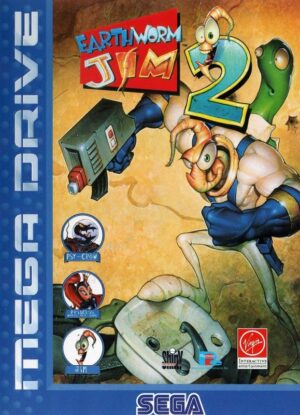Retro Replay Review
Gameplay
Killing Time delivers an experience that diverges from the room-by-room progression of many late-’90s shooters. Instead, you step into a semi-open world on Matinicus Island, where exploration is rewarded and backtracking is part of the core design. There’s a genuine sense of discovery as you wander the overgrown grounds, abandoned docks, and labyrinthine corridors of the Conway estate. Every door you unlock and every hallway you revisit holds the promise of new secrets—and new horrors lurking in the shadows.
The game’s arsenal is both familiar and refreshingly inventive. Alongside pistols, shotguns, and Molotov cocktails, you’ll find an ancient Ankh that unleashes mystical energy waves, capable of shredding multiple foes at once. Tactical use of these weapons is encouraged: conserve ammo by luring enemies into traps or by unleashing a well-timed blast from the Ankh when hordes descend. Resource management becomes a thrilling juggling act, especially when you realize that every bullet might be precious in a boss encounter or a sudden ambush.
Killing Time also places a stronger emphasis on movement and environmental interaction than many of its contemporaries. You can jump across chasms, crouch under low beams, and strafe to avoid leaping creatures. Certain puzzles require precise platforming or finding hidden switches that open secret passages. These mechanics blend seamlessly with combat, turning firefights into dynamic set pieces where spatial awareness is as important as trigger discipline. Occasional spike traps, collapsing floors, and ghostly apparitions that vanish if you don’t keep moving keep the adrenaline high throughout.
Adding to the engagement are the spectral visions of Tess Conway and her ill-fated guests. These spirits appear at key moments, offering cryptic hints and revealing pieces of the 1932 summer solstice tragedy. Their whispers guide you toward hidden keys and puzzle solutions, ensuring you rarely feel truly lost—yet the game retains a rich sense of mystery, since not every clue is straightforward or reliable.
Graphics
Though built on late-’90s technology, Killing Time’s visuals remain impressively atmospheric. The Conway estate is rendered with moody lighting and richly detailed textures, from peeling wallpaper in dusty hallways to rolling fog over the island’s pine forests. The contrast between the decaying mansion interiors and the wind-swept outdoors creates a constant tension—one moment you’re bathed in moonlight, the next you’re prodded by shadows lurking just beyond your lantern’s glow.
Lighting effects play a starring role in establishing the game’s horror tone. Flickering lanterns cast dancing shadows on stone walls, while sudden electrical storms illuminate distant waves crashing against rocky cliffs. These dynamic light shifts aren’t merely cosmetic; they often signal incoming threats or highlight switch panels concealed in dark recesses. When a horde of grotesque creatures emerges from a doorway, the interplay of light and darkness heightens the scare factor.
Creature designs are suitably chilling, blending body horror with supernatural flair. Mutated island wildlife, skeletal revenants, and amorphous shadow-beasts are all rendered with enough polygonal clarity to be genuinely unsettling. The centerpiece, of course, is the Water-Clock of Thoth itself: a rotating mechanism of glowing glyphs and drifting water filaments that looks both ancient and otherworldly. Encountering it in a secret crypt is a visual highlight that underscores the game’s mythic ambitions.
Story
At its core, Killing Time is driven by the tragic tale of Tess Conway, a wealthy heiress who vanished on the night she tried to activate an Egyptian Water-Clock artifact. You play as a former student of Dr. Hargrove, the Egyptologist who originally unearthed the relic. Rather than presenting a linear chain of cutscenes, the narrative unfolds through environmental storytelling, ghostly apparitions, and scattered diary entries that paint a vivid picture of the 1932 summer solstice ritual gone horribly wrong.
Each spectral encounter serves a dual purpose: they reveal new layers of Tess’s doomed expedition while also offering practical assistance. One moment you might witness Tess’s last frantic attempt to contain supernatural forces, the next you’re given a phantom key to open a sealed door. This weaving of story and gameplay ensures that plot revelations feel earned. It also deepens the mystery—every answer leads to more questions, and you’re driven by the same curiosity that led Tess to the island in the first place.
The pacing of the narrative is expertly tuned to maintain suspense. Early stages drip-feed lore in short, haunting visions, while mid-game set pieces crank up the intensity with massed enemy attacks and environmental hazards. By the final third of the adventure, the stakes feel truly cosmic, as the Water-Clock’s otherworldly energies begin to warp reality itself. This escalating tension makes the climax feel both inevitable and satisfyingly epic.
Overall Experience
Killing Time stands out as a hidden gem among classic first-person shooters, deftly balancing combat, exploration, puzzles, and storytelling. Its semi-open world encourages curiosity and rewards careful observation, while the fusion of conventional firearms with mystical weaponry provides a varied combat palette. The game’s movement mechanics—jumping, crouching, strafing—are more than mere bells and whistles; they’re integral to puzzle solving and survival.
While the dated engine occasionally shows its age in texture pop-ins or polygonal edges, these technical quirks are largely overshadowed by the game’s immersive atmosphere and strong design. Some players might find the level layouts slightly confusing at first, but the spectral hints and environmental signposts smooth the learning curve. Occasional rough patches in navigation only serve to heighten the sense of isolation and unease.
For fans of gothic horror and early-era shooters, Killing Time offers a unique journey that blends supernatural mystery with pulse-pounding action. Its strengths—an evocative setting, inventive weapons, and a compelling story—elevate it beyond mere nostalgia. Whether you’re in it for the scares, the puzzles, or the hunt for lost artifacts, Killing Time delivers a richly rewarding experience that stands the test of time.
 Retro Replay Retro Replay gaming reviews, news, emulation, geek stuff and more!
Retro Replay Retro Replay gaming reviews, news, emulation, geek stuff and more!









Reviews
There are no reviews yet.